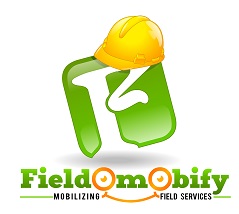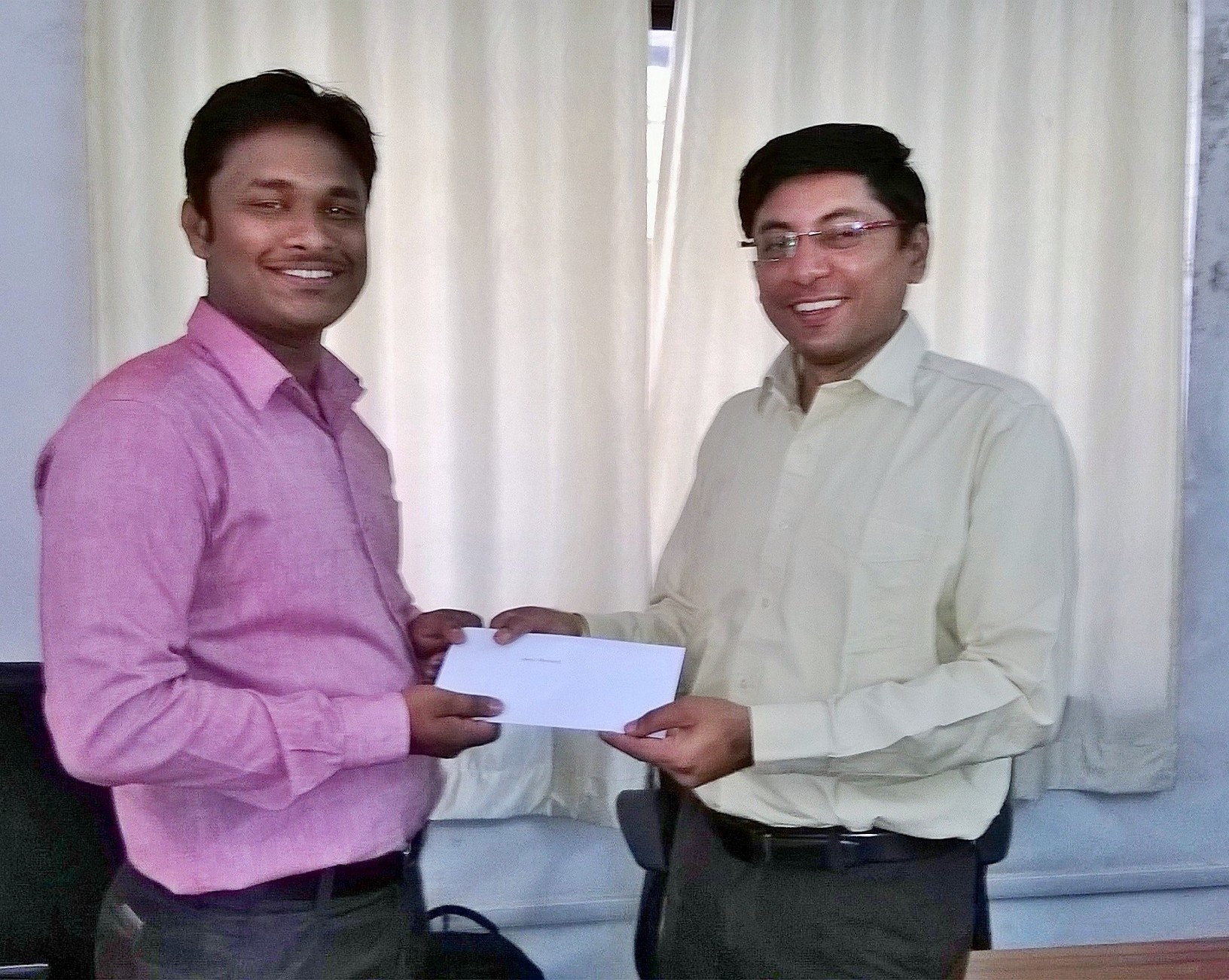Many startups claim humble beginnings, but our story really did begin in one of the most humble ways imaginable. My colleague Shridhar and I met for a friendly chat at a Cafe Coffee Day. For one reason or another our conversation turned into a trend in mobile workforce management that we’d both begun to notice. We both agreed that there seemed to be many more players in this industry than before. Certainly there had to be something behind this newfound market interest? The more we talked, the more this smelled like an opportunity. Especially since we had already developed a similar software solution for a client not too long before. How hard could it be to make a splash in this new market? “Let’s do it” we said, let’s strike while the iron is hot. Of course, saying something and making it happen are two different things, as we would learn time and again in the near future.
When thinking back to this time, we hadn’t really realised it, but this was the beginning of a kind of courtship. The two of us were going to give birth to something that would impact both our lives in a fundamental way. This casual meeting had turned into a first date and proposal all in one and, just like any expectant parents, it would take nine months before our newly formed plans would come to fruition.
The first month
“Let’s get some feedback” I said to Shridhar. We didn’t want to go from our little echo chamber straight into committing time and money on an untested idea. Luckily for us, we had access to friends, clients and companies upon whom we could test the concept we had in mind. We set out to do the groundwork and almost without exception responses to our ideas were positive. Even more importantly, we found ourselves in possession of a wealth of constructive criticism. We realised that we’d been too narrow in our conceptions. The true scope of the project became apparent as various respondents pointed out things we hadn’t thought of. I’m glad we were able to get such a complete picture of the size of the task this early in the process. It meant that we were going into this with open eyes.
As exciting as a good idea can be, you need to put it to the test and make sure it will survive in the market you’re heading into.
The second month
As much as the first month was about getting out there and “pounding the pavement” the second month was all about staying indoors.
And paperwork.
Lots of paperwork.
We sat ourselves down and, armed with all our feedback, wrote out every aspect of what we were going to do. It was a bit like mapping out a vast new continent, but instead of mountains and valleys we were mapping out ideas. We began cold-calling prospective companies, which is usually a sales technique. However, rather than selling something all we wanted to do was listen. What did they need from our future company? What didn’t they like about our competitors? Contrary to what you may expect, these businesses were generally happy to discuss their wishes and grievances with us. We were doing market research and establishing a foot in the door with companies that might very well be our clients eventually.
Slowly but surely the different parts were coming together. We had the pieces of the puzzle, now we just had to fill in the picture.
The third month
With Shridhar completely immersed in the development process I was dealing with the problem of scaling and flexibility. We needed to accommodate a variety of clients with different organisational architectures. In addition to this, some clients might be small and the other could have massive operations. I wanted to accommodate both ends of this spectrum and everything in between.
Solving this problem amounted to drawing lots of charts and endlessly discussing functionalities and the interrelationship between them. By the end of the third month we’d just about finished the data model with the scalability that we would need. Some of our software modules had reached the point where we could begin testing them.
The fourth month
In this month the development floodgates just burst open. Our developers had no trouble in grasping the concepts that we’d so painstakingly mapped out and during development they came up with even more ideas. The synergy was fantastic and this really sped up the development process. As meaningful functions began to take shape we could see a structure emerge. With each iteration and test cycle I felt happier and happier. It’s a good thing too, because the next month would try my good humour.
The fifth month
This month it felt as if the honeymoon was really over. We were starting to miss our deadlines and weren’t on track with our testing goals. Project management issues began to crop up too, team members were often not clear on who was doing what. What saved us from disaster here was the implementation of a “teamwork” project management tool. Suddenly we went from working almost blindly to having complete situational awareness and intra-team visibility.
The sixth month
With all this serious stuff going on, we hadn’t paid any attention to something we thought would be easy to solve: the company name. It turns out this is probably one of the most difficult, most painful exercises you can go through. A company name is the core of your brand, it needs to be catchy while being respectable. If we got this wrong, it could really hurt us. We pored over dictionaries, trying different combinations of Greek and Latin words, but to no avail. None of them made an impression. The name, like the company itself, came about through a prolonged talk between myself and Shridhar. Between us, we came up with the name “FieldoMobify”. That was it, we both liked it. The very next day I had T-shirts made bearing our new logo and name. Now everyone really looked like they were part of the same team. The effect on morale was indescribable, I felt closer than ever to realising our dream.
The seventh month
We scrapped our UI for the third time.
As far as we were concerned the UI was the suit of clothes our technology wore and just as “the clothes make the man” having the right UI was key to our success, regardless of how sophisticated and advanced the backend was. Simpler and more attractive, this was the mantra we repeated to one another. Big ideas aren’t very useful for the fine polish that sets you apart from everyone else and it took weeks of research and fine tuning to get the UI to the point where both of us were satisfied. I can’t explain how we knew the UI was ready, but every time I saw it, it puts a smile on my face. I knew we were making something beautiful and the excitement that had been drained through frustration quickly returned. We were proud of what we had and we were eager to see it live in the hands of clients. Our mobile app and website structure was now finished, the light at the end of the tunnel was visible.
The eighth month
While the development was wrapping up, we began conducting a roadshow – with a single demo video. There was no working structure to show off, just a bunch of modules that worked by themselves but not together. We started cold-calling again, this time following the calls up with an email linking to our promo video. People responded really well to the video and today I’d tell anyone it’s important to have a good-produced demo video to catch and keep the interest of prospective clients.
The concepts we were pushing were a bit radical for some, so we had to tread carefully and educate as much as we were marketing. This was a make or break phase for our company, but finally we had a payoff; our first advance cheque had arrived.
It was a completely personal sale, the client just saw the video and our dedication and that was enough to get a signature on the dotted line.
Needless to say, we celebrated that first cheque properly.
The ninth month
Everything was happening at once.
Activity had reached a peak level and refused to come down from there. We began making sales and marketing hires, getting ready to push our products and services the moment they were ready.
The problem was that they weren’t ready. We were still testing. We tested and then we tested again. The website copy still needed writing too, and we’d been putting it off for too long. Within the walks of FieldoMobify there was a never-ending wall of talk. Finally, we were in a position to install a first implementation for the client who had written our first cheque. He was our de facto beta tester. True to that title, we were receiving 10 suggestions a day from him. Real clients are without a doubt the best system testers you can get. The feedback we were getting was almost worth more than the money. We were quickly ironing out the bugs that could have caught us off-guard post-launch. We were now confident that we could officially bring FieldoMobify into the world. Behind us lay months of both struggle and joy, before us lay just one more thing.
We picked a date.
It was a tough birth and like most good parents, we have high hopes for our progeny. Very high hopes in fact. In our minds FiledoMobify will transform service management and small business for the better. The one thing we do know is that one way or another, we’re extremely proud of what we’ve created.







Rahul Kanchan
Thats a great story. Congratulations
Ranjeet Pratap Singh
Good video, great story. Best wishes for the baby’s future 🙂
Amol Pomane
Thanks a lot Ranjeet
Amol Pomane
Thanks a lot Rahul
Amitabha Saha Roy
Very nicely produced video Amol. Totally agree with you that a good video goes a long way in getting people interested in your product.All the best and hope that your baby grows into a successful product.
Amol Pomane
Yes! It helped me a lot